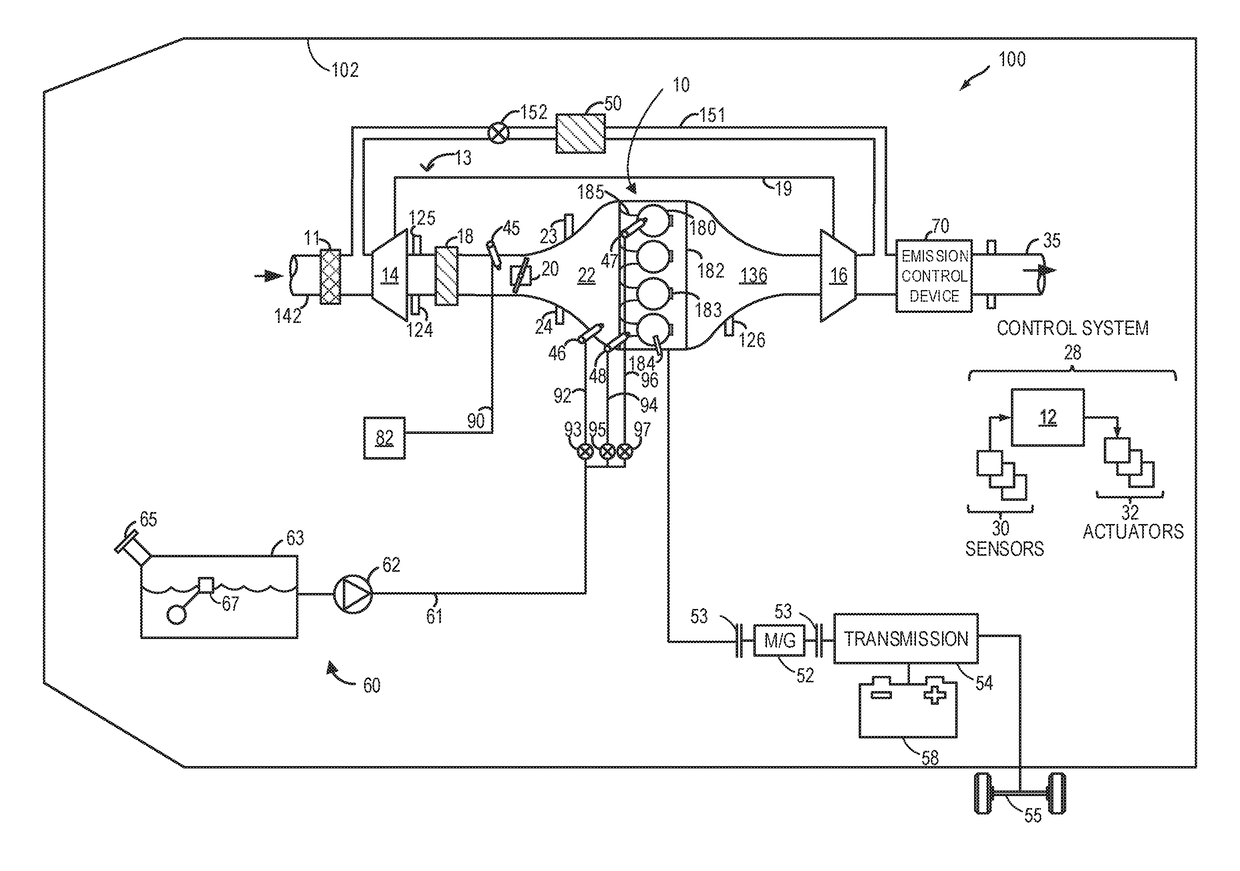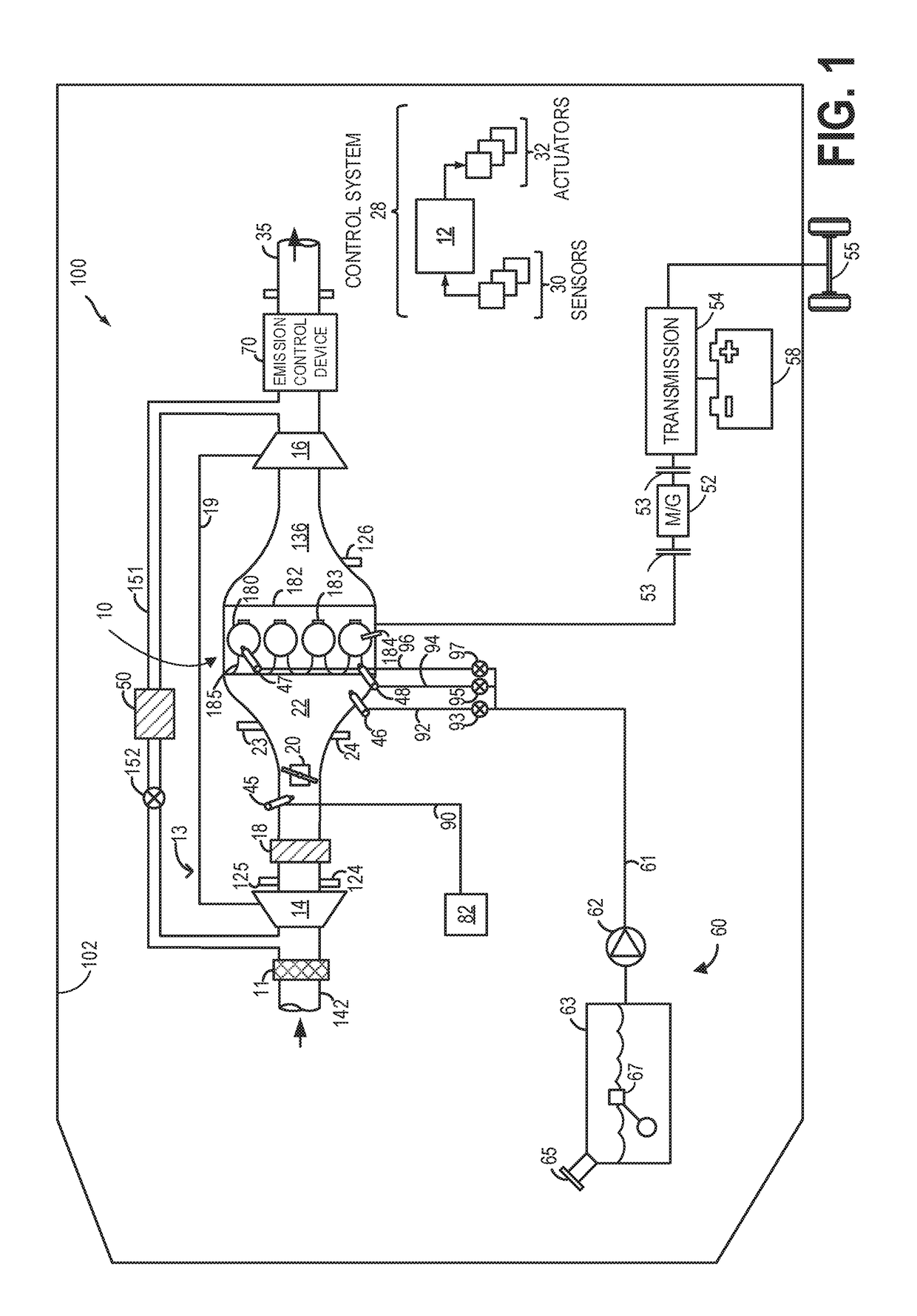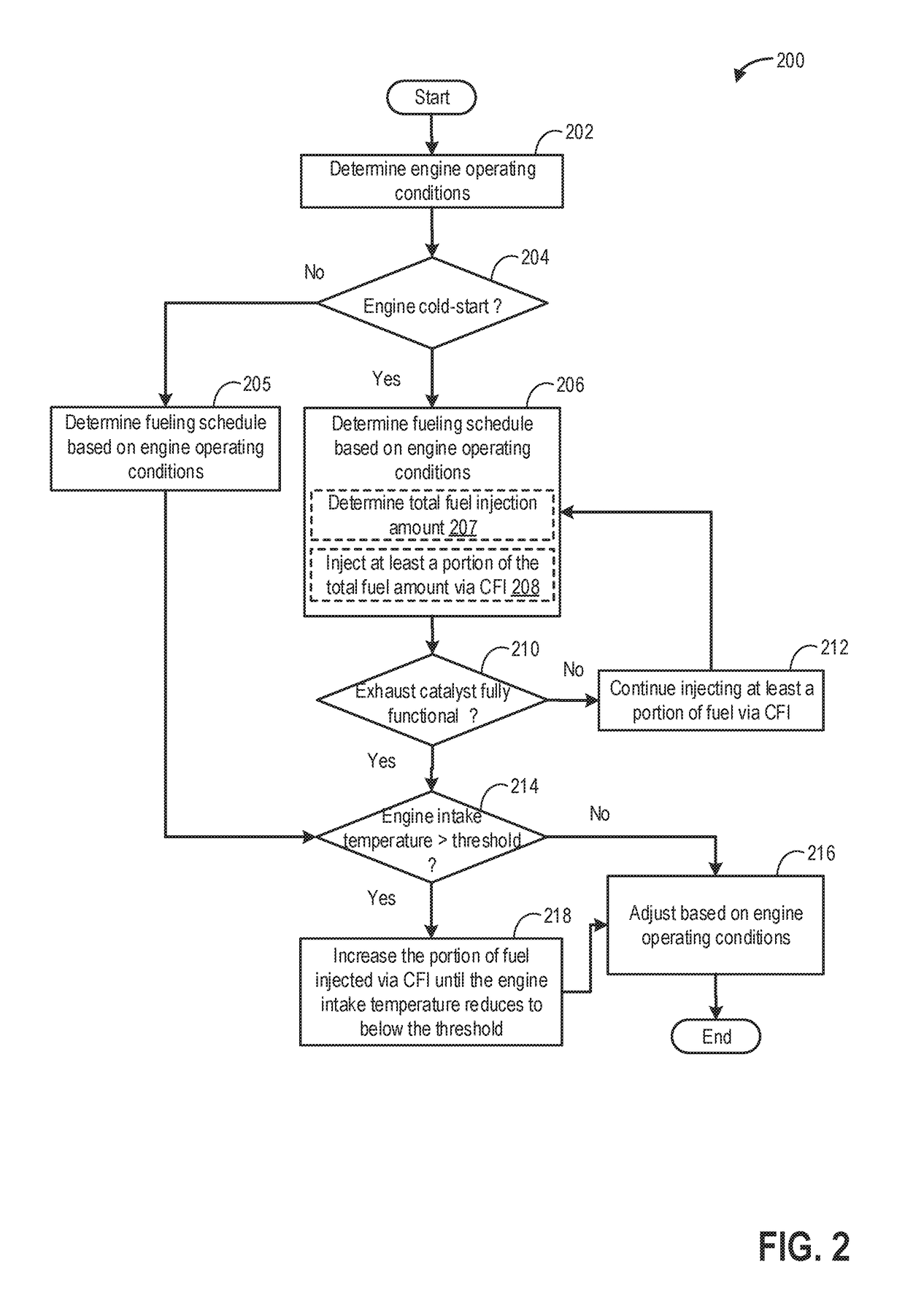Methods and systems for central fuel injection
a fuel injection and central fuel technology, applied in the direction of electrical control, machine/engine, exhaust treatment electric control, etc., can solve the problems of affecting the performance of the engine, and being prone to pre-ignition combustion events, etc., to achieve less turbulence, improve pre-ignition mitigation, and generate more particulate matter emissions. or soot
- Summary
- Abstract
- Description
- Claims
- Application Information
AI Technical Summary
Benefits of technology
Problems solved by technology
Method used
Image
Examples
Embodiment Construction
[0017]The following description relates to systems and methods for leveraging manifold fuel injection for increased charge air cooling, for reduced NOx emissions, and for pre-ignition mitigation. The methods herein may be applied to an engine system having manifold, direct, and port fuel injection capabilities, such as the engine system of FIG. 1. An engine controller may be configured to perform a control routine, such as the example routines of FIGS. 2, 3, and 5, to adjust a fueling schedule, including adjusting an amount of fuel delivered via manifold injection relative to the amount of fuel delivered via port injection and / or direct injection for reduction of NOx production and for pre-ignition mitigation. Example adjustments of fueling schedule for attaining a desired charge cooling for NOx reduction and pre-ignition mitigation are shown at FIGS. 4 and 8. Examples of fuel split ratios between manifold injection and port injection (and / or direct injection) are shown in FIGS. 6 a...
PUM
 Login to View More
Login to View More Abstract
Description
Claims
Application Information
 Login to View More
Login to View More - R&D
- Intellectual Property
- Life Sciences
- Materials
- Tech Scout
- Unparalleled Data Quality
- Higher Quality Content
- 60% Fewer Hallucinations
Browse by: Latest US Patents, China's latest patents, Technical Efficacy Thesaurus, Application Domain, Technology Topic, Popular Technical Reports.
© 2025 PatSnap. All rights reserved.Legal|Privacy policy|Modern Slavery Act Transparency Statement|Sitemap|About US| Contact US: help@patsnap.com



